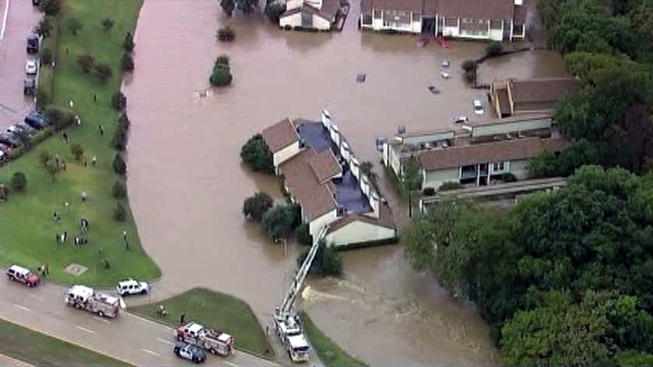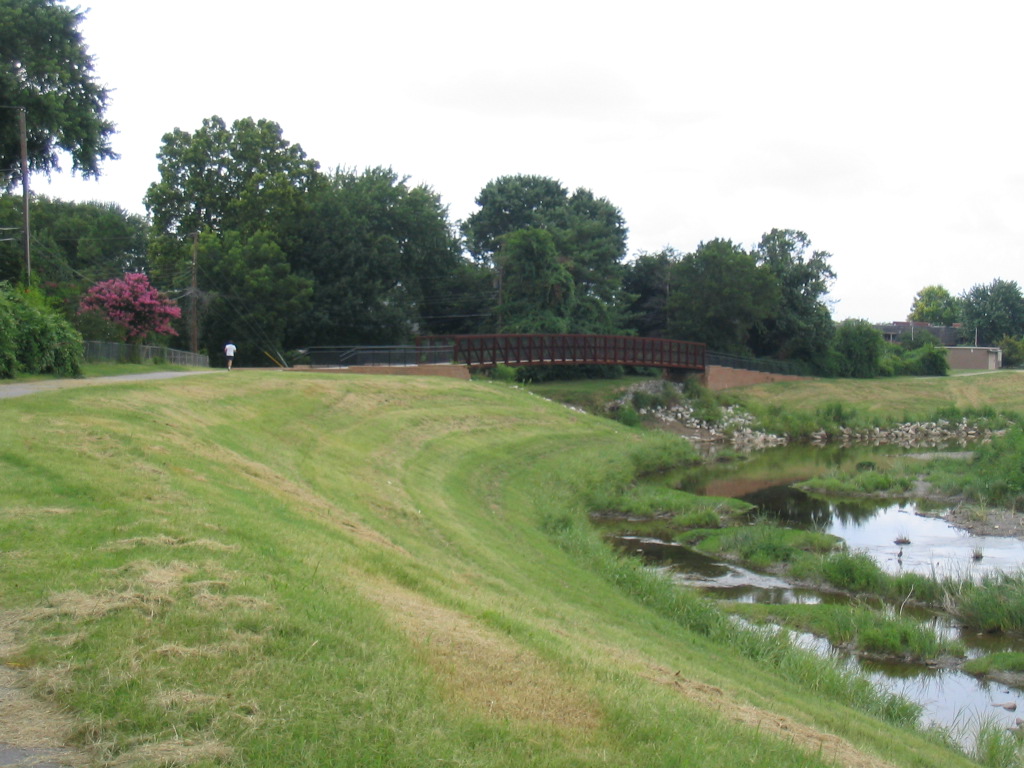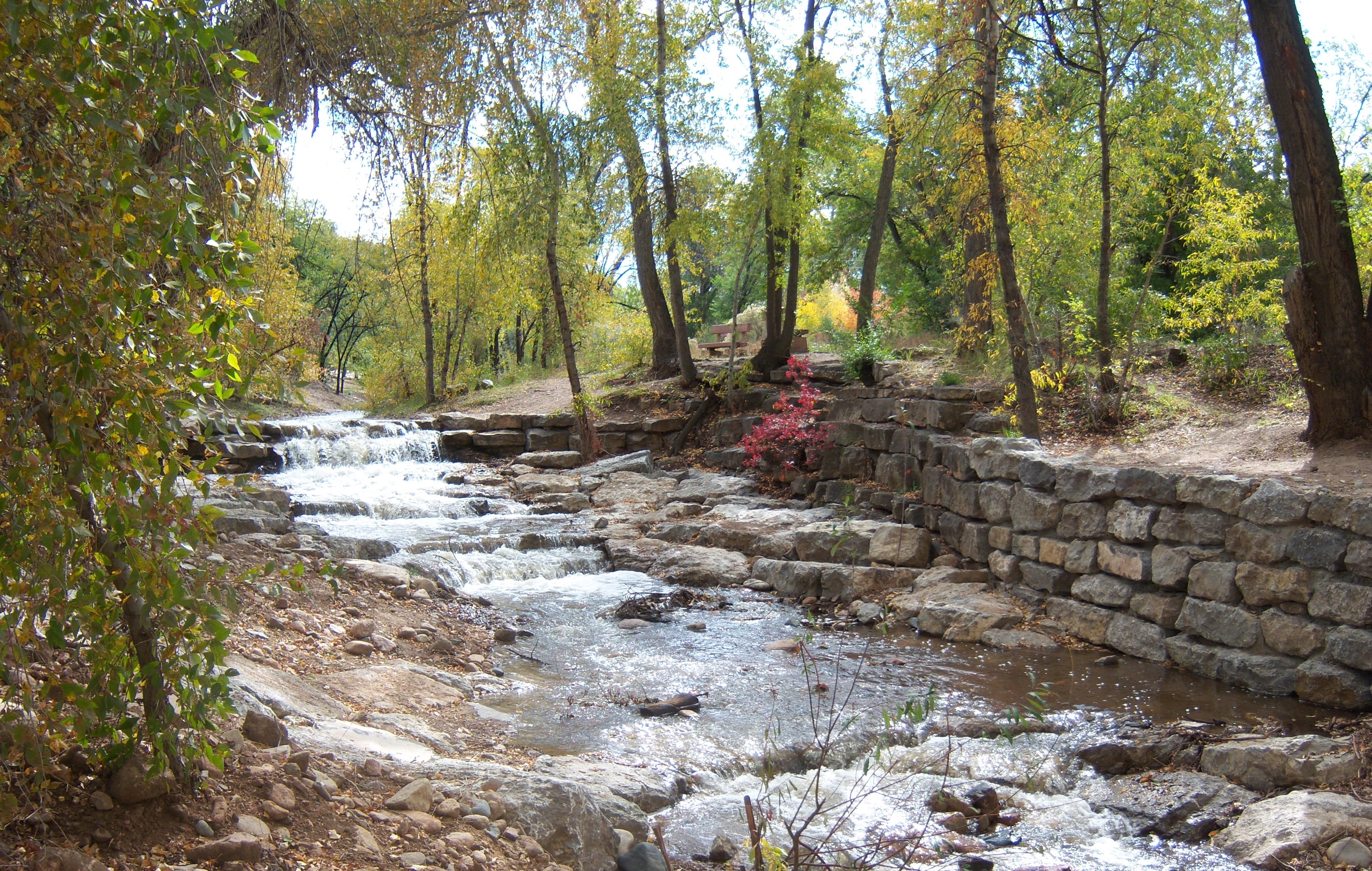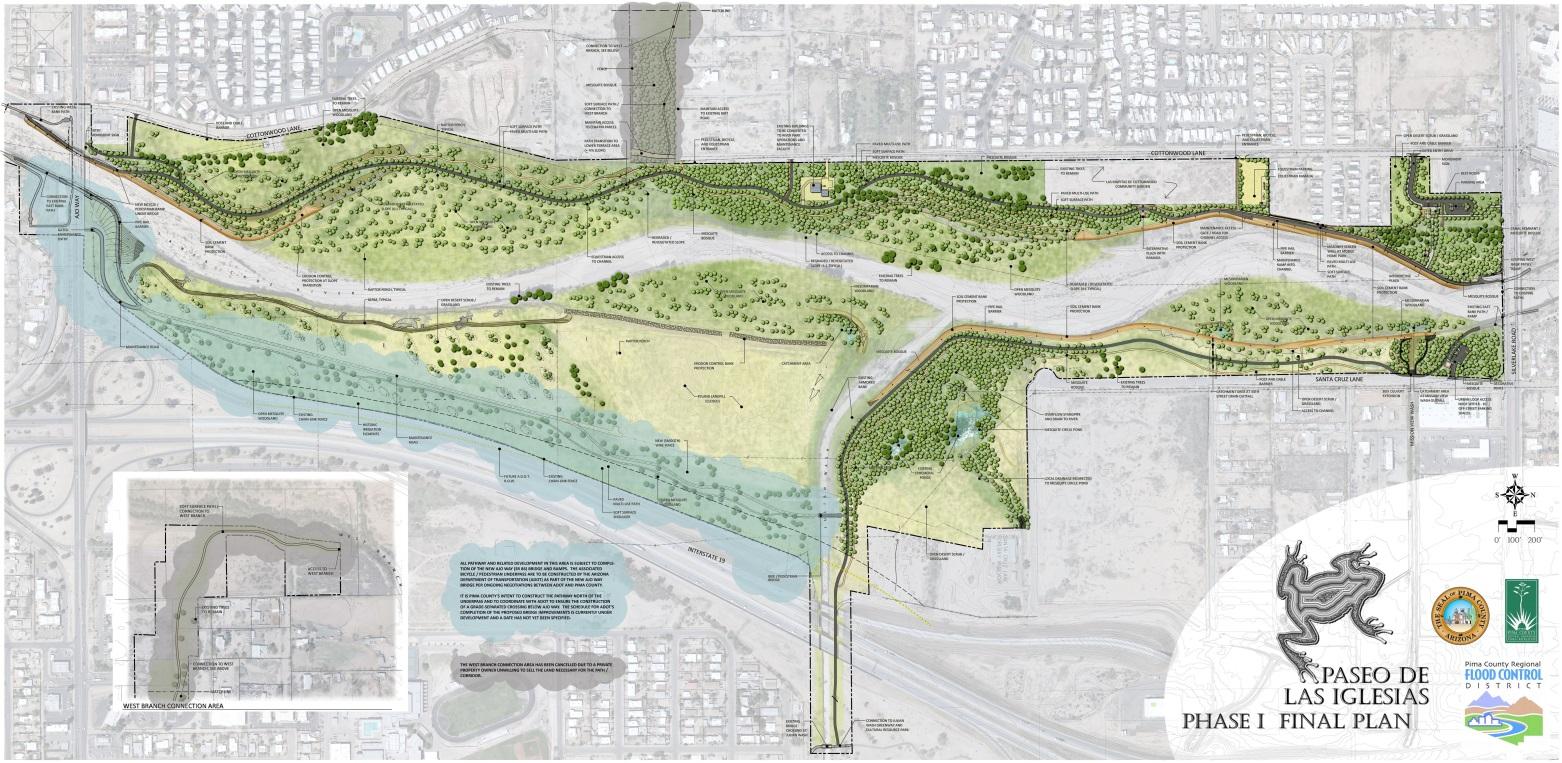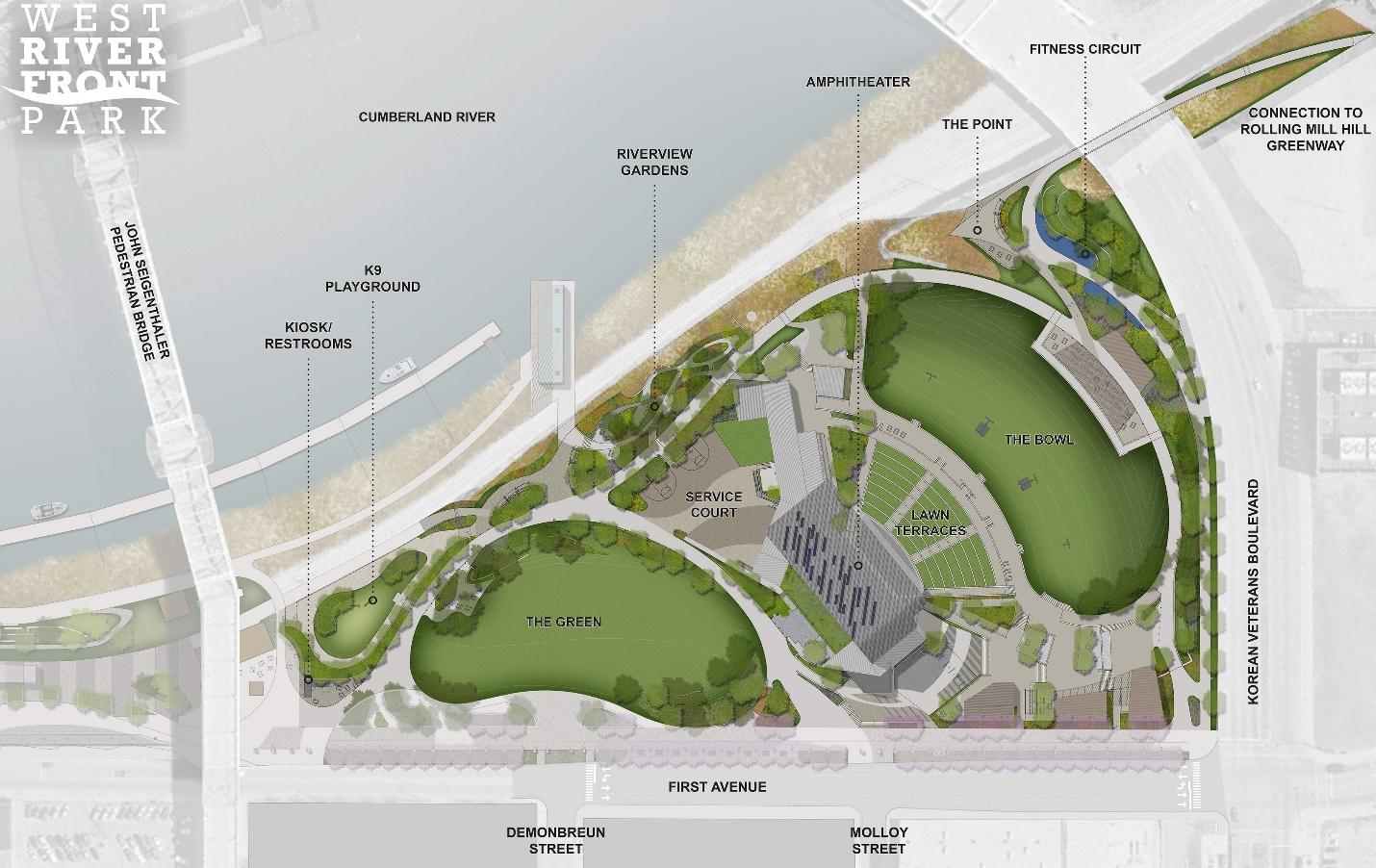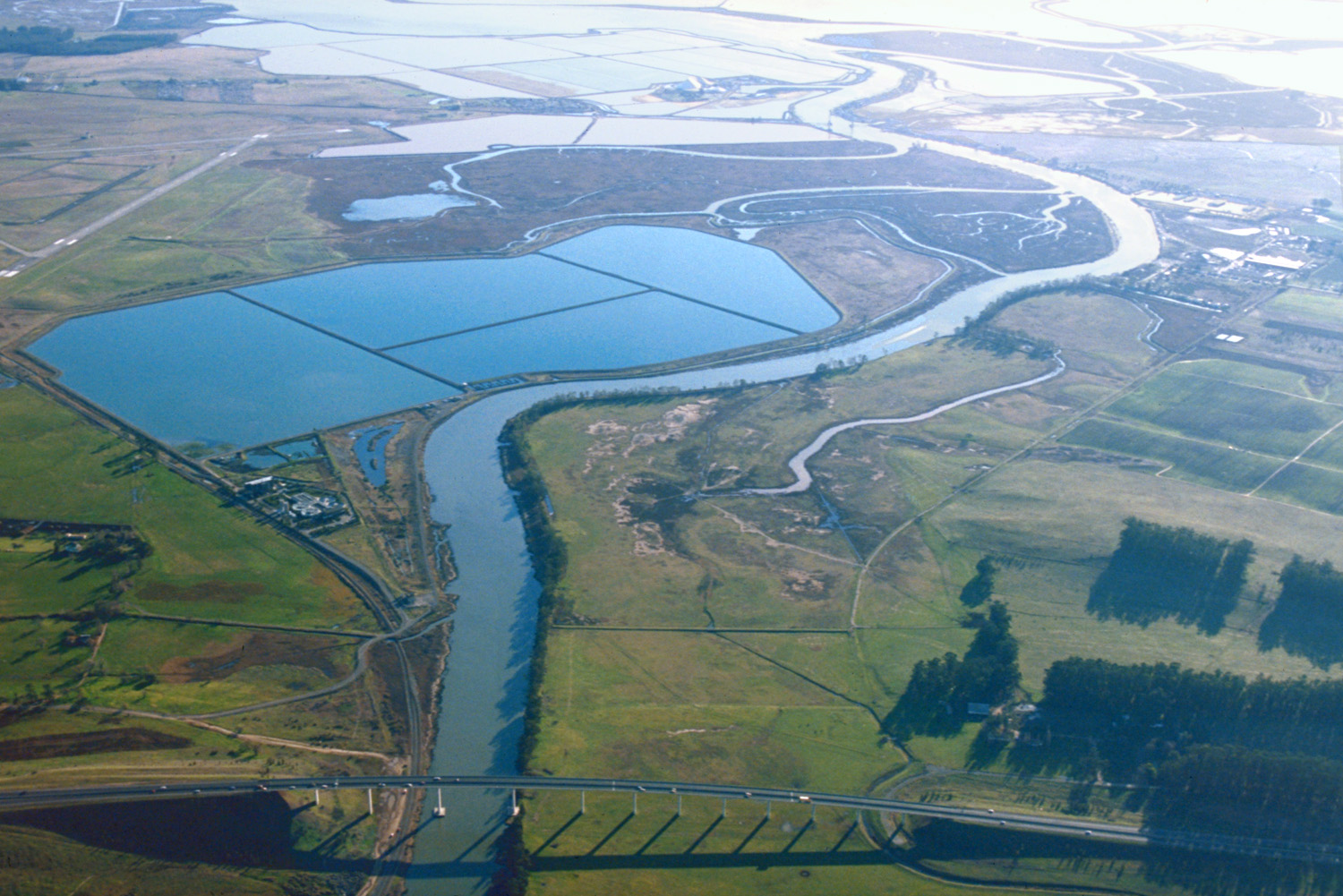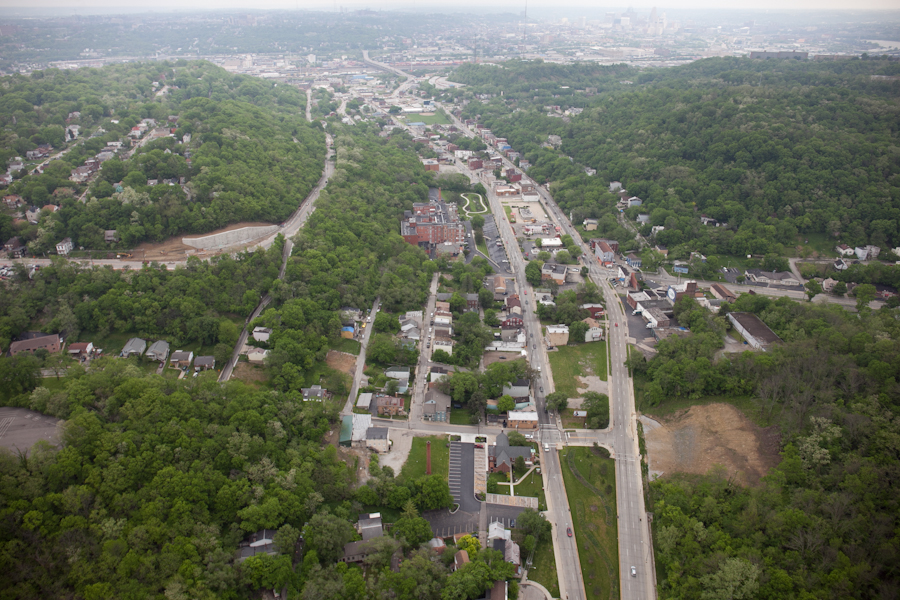Waterfront Parks
Waterfront parks are communal recreational spaces that are intentionally designed to be flooded with minimal damage during storm or flood events. Waterfront parks are often spaces which were previously developed – whether for industrial, commercial, or residential purposes – which have suffered repeated flood damage over time and whose original use no longer serves its function. While most commonly created by public entities, it is not uncommon for a private development to include the creation of a waterfront park as a part of a larger site design. While most common along rivers, waterfront parks can be employed in coastal areas as well.
Hazard Mitigation
Waterfront parks reduce the impacts of flooding by creating a space that can capture and store floodwaters during flood events with minimal damage to the park infrastructure, reducing the overall extent of a single flood event and the damage that it causes.

Siting Considerations
An important consideration in identifying areas where waterfront parks may be successful, particularly in riverine systems, is not only where flooding is currently a recurring problem, but also identifying where opportunities in the broader river system may provide a chance to most effectively store floodwaters. It may be that converting an area where flooding is currently a regular concern is in fact less effective than converting a space upstream of the flood impacts.
In addition to identifying the most effective place to mitigate floodwaters, as with any redevelopment effort, converting properties from one form of land use to another requires a consideration of the potential impacts of previous uses as well as what is allowable in local land use and zoning ordinances. Redevelopment of a brownfield will require far more extensive effort to mitigate potential pollution issues than other past uses might.
Design of the park itself is likewise an important consideration. Ensuring that floodwaters can easily enter the park when needed and that drainage allows for waters to recede in a controlled way will allow the park to serve its larger flood reduction purpose most effectively. Allowing for extended stretches of time where any park infrastructure may be submerged by floodwaters is likewise an important consideration in the design process.
Costs
The primary cost associated with the creation of a new waterfront park is the acquisition of the land in question. Property costs vary greatly across the country, however waterfront property is often on the more expensive side in relative terms, even in cases where there are recurring flooding problems.
Additional costs may occur as the design and re-development of a space is undertaken.

Co-Benefits of the Strategy
Waterfront parks are intentionally designed as recreational areas, creating opportunities for community engagement and improved public health and wellbeing through exercise and community interaction. Similarly, by creating an attraction along the waterfront, surrounding businesses often see increased traffic and sales and the value of adjacent property may increase.
Depending on the park design and components, floodplain and wetland habitat can be restored or introduced, creating opportunities for improved foraging and breeding ground for local wildlife and the potential for more human-wildlife interactions.
Maintenance Considerations
The principle concern in maintaining waterfront parks occurs in post-flood conditions. As floodwaters slow down, the sediment and sand slowly drops out of the water column, potentially requiring a need to clean and remove the settled sediment from the park. Similarly, even when properly designed to weather a storm event, minor damage may occur to infrastructure (play equipment, benches, etc.) within the park which will need to be repaired once floodwaters have receded. Standard non-flood related park maintenance and upkeep will also need to occur.
In addition to cleaning and upkeep, other maintenance requirements will depend on the park design. In areas where habitat restoration has occurred there may be some ongoing maintenance needs.

Similar or Complementary Solutions
Depending on the current land use and ownership of an area being identified as a potential waterfront park, property buy-outs may be an important part of creating the park. Likewise, the creation of a park may create opportunities for restoration of floodplain features or coastal habitats or for the establishment of living shorelines to manage erosion issues.
Flood detention basins serve a similar purpose as a waterfront park, allowing stretches of the floodplain which may have been previously disconnected to fill with water during flood events without causing additional damage to surrounding infrastructure. The primary difference between these two strategies is the amount of infrastructure associated with the floodable space. Flood detention basins are typically largely undeveloped and waterfront parks may contain more infrastructure that is designed while taking into consideration flood impacts..
Additional Resources
The Waterfront Alliance, a not-for-profit organization in New York City, has created guidance on development along the waterfront that can provide helpful insights into thinking about how to approach waterfront parks, particularly in a coastal setting. While it is presented in the context of a points based system to earn a certification, the topics discussed and considerations that are encouraged are widely applicable. The information on waterfront parks can be found in Part 2 of the larger document.
The New York City Department of Parks has developed guidance on creating sustainable parks. While focused on New York City’s parks, the general guidance and process is widely applicable.

